Contemporary artist Lynnea Holland-Weiss delves into ways of showing the intangible in relation to the corporeal experience and how this relates to the visualisation of time.
Some of my major trying moments include getting thyroid cancer in my early twenties, having to stop using oil paint for my health, almost loosing ten paintings in South Africa while they were in transit and so much more. I tend to find that even though in the moment they can seem rather devastating, eventually they end up feeling meant to be and I’m grateful for them.

Contemporary artist Lynnea Holland-Weiss.
How did your tryst with art begin?
I was a very quiet and observant kid. Feel like I have always taken special notice of common and seemingly insignificant interactions. I grew up drawing a lot, like most kids do, but just never really stopped. For most of my upbringing however, I was focused on dance. In high school, I was in a hip-hop dance company in Oakland, California, with mostly young adults. I was the baby of the crew. And then I went to an arts high school as a dance major where I began to study ballet and modern dance. All the while, I was still drawing and painting as well. I have always struggled with words and found this way of communicating limiting in a way.
Both drawing and movement made sense to me and were avenues for me to be expressive and bold, while still being a pretty quiet kid. The first time I painted from a model in a figurative painting class was a particularly special moment, and perhaps this was when the initial shift in focus from dance to painting started. Thinking about the body, how it moves and how we observe and interpret a gesture was something that translated so clearly from dance to figurative painting for me. While dance was my first love, I’d say painting was my true calling.

Contemporary artist Lynnea Holland-Weiss.
Tell us about the evolution of your practice over the years.
My painting practice is constantly shifting and changing. I have always resisted being too formulaic or confining myself into a box. My colour palette has become bolder throughout the years. I find colour to be extraordinarily profound and emotional. I like exploring what it’s able to evoke when used in unexpected ways. Through the evolution of my practice, the one constant has always been people. I am a figurative painter through and through and I have very little desire to paint anything else. This is completely related to my history with dance and growing up learning to use body language as my tool for expression.
I think and make decisions from this physical and intuitive place. With that, I’ve always been interested in the process, materiality and spontaneity just as much as the subject matter. Because of this, I did have a brief exploratory moment of abandoning the figure for abstraction, but quickly returned back to figuration for its undeniable ability to trigger emotion and connect to the viewer in such an immediate way. The human form is such a direct entry point for exploring identity, empathy and vulnerability. The body is the site of all experience, and that interests me.

Contemporary artist Lynnea Holland-Weiss.
Lets talk about your biggest lessons and hurdles? Which is your most memorable moment?
The learning moments throughout the journey are constant. It’s a process of finding oneself and discovering what directions, collaborations or opportunities fit or aren’t the right fit. Life sure will throw you curveballs and hiccups. For me, some major trying moments include getting thyroid cancer in my early twenties, having to stop using oil paint for my health, almost loosing ten paintings in South Africa while they were in transit, navigating public art projects, and so much more. I tend to find that even though in the moment they can seem rather devastating, eventually they end up feeling meant to be and I’m grateful for them.
As far as my most memorable career milestones thus far, I have to say my first solo show after being out of college at Space 1026 in Philadelphia, Pennsylvania, and then my first international solo exhibition in Geneva, Switzerland, with the gallery that now represents me, Galerie Sébastien Bertrand. Both left me with the same inexplicable feeling inside. Not necessarily just your typical happy or excited feeling, but a complex and full feeling in the pit of my stomach, a feeling that made me know that this is what I am meant to be doing.
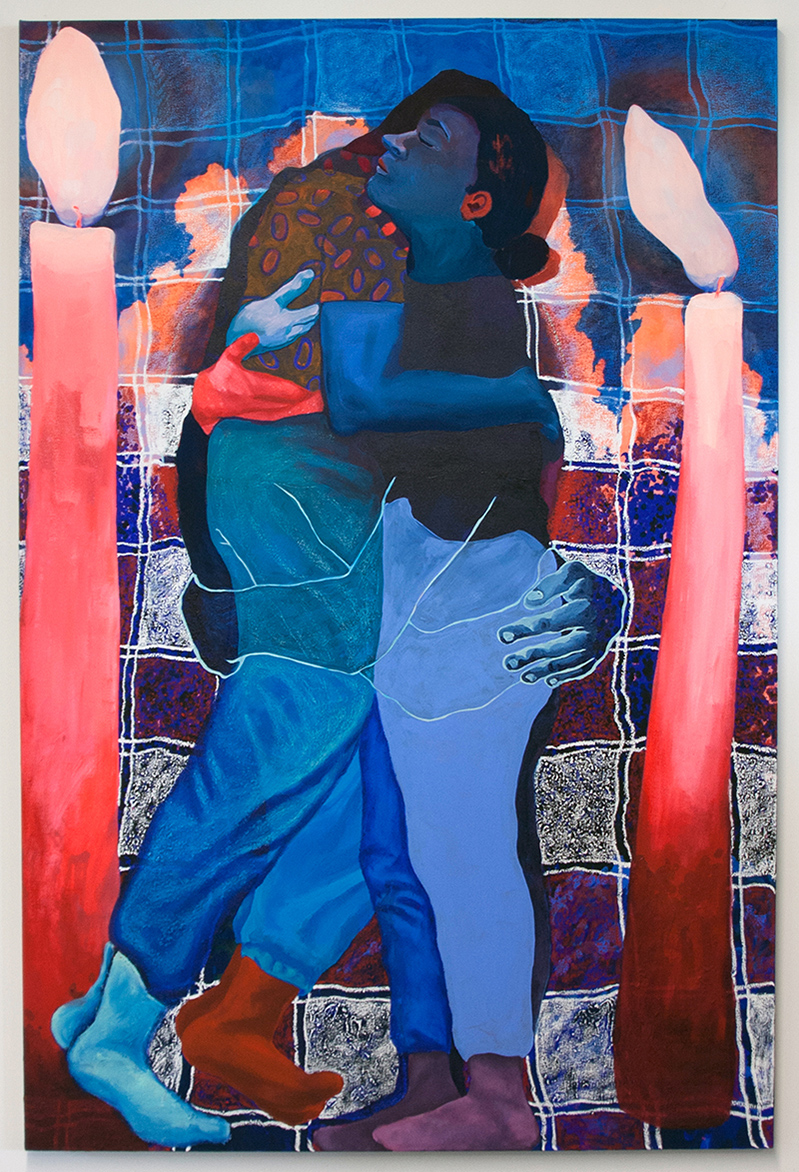
Contemporary artist Lynnea Holland-Weiss.
What inspires you? Take us through your process and continuous frameworks of reference.
I am constantly seeing potential paintings all around me. Like most figurative painters, I love people watching. Public transportation, waiting rooms, museums or parks, or being on the dance floor sweating with strangers is constant fuel for my paintings. I am motivated by the love and heartache that is the human experience. At the core of my work is a constant search for connection, intimacy and true empathy. I value emotional intelligence and complex multiplicity. I would love to completely dissolve the ability to disassociate ourselves from one another. My process always starts with specific body language or a gesture of intrigue.
This research stage also involves moving my own body, photographing or drawing from mine and other people around me in specific positions. I’m always watching dance videos, and recently have started drawing from stills as points of reference for paintings. For me the start of a piece begins very abstract and spontaneous, usually working horizontally allowing paint to pull, puddle and create organic moments. From there, I’ll layer bodies from the initial sketches on top of the stains of colour, both reacting to and keeping moments of texture within the figures. The painting is a fully reactionary process from that point on and often takes on new directions as it progresses.
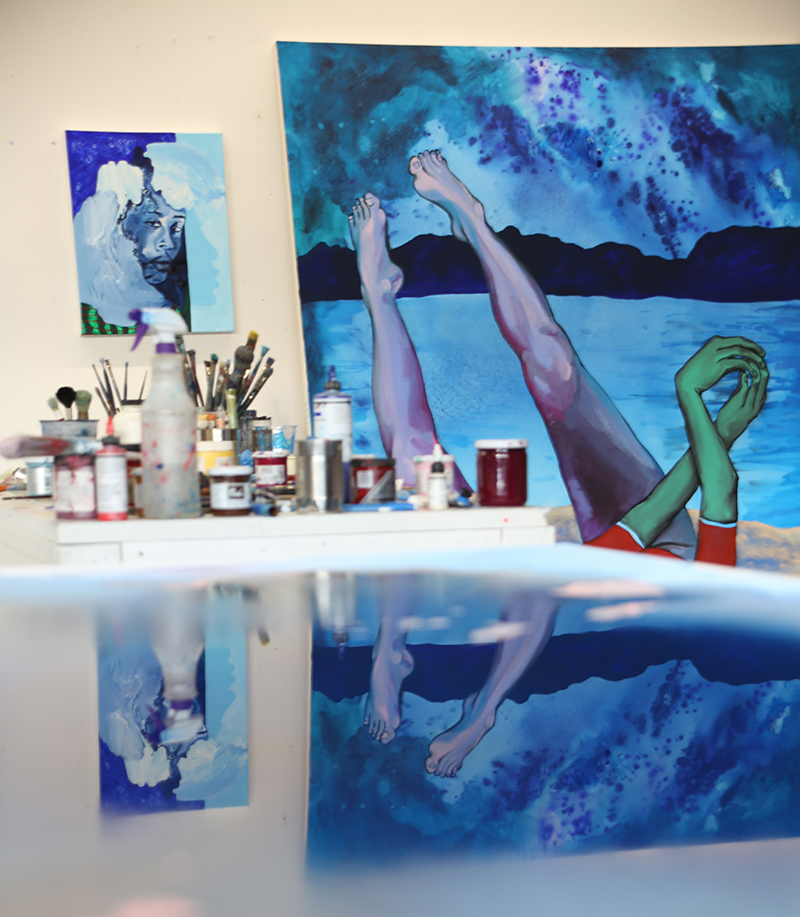
Contemporary artist Lynnea Holland-Weiss.
What is the primary role of an artist? How do you describe yourself in the context of challenging people’s perspectives via your work and art?
I think the primary role of an artist is to feel and share in a way that is deeply sincere. Our job is to reflect, question and offer a way to connect. Artists are not here to have all the answers. Instead, I think it is our role to open the door to the questions, the unknown, the feelings, the nuances, and the inquisitive nature in us all to go deeper. I have never felt there is one way to perceive or interpret my work. So in that case, a challenging perspective is always welcomed and encouraged. I love hearing how somebody is interpreting an image, and more than anything I love the variety of perspectives that it often triggers.
How do you balance art and life?
Art and life are so entirely intertwined. Since this is the case, I think it’s particularly helpful that my life partner is also an artist. We support each other in our efforts, and most importantly we fully get it and are right there next to one another obsessing and spending all of our time in the studio. It truly becomes a way of life. But with that, it definitely is important to find balance and your rhythm, which can be difficult. I’m currently in the process of assessing and adapting to these needs. I am transitioning from having a live/work studio to just keeping the studio as my place of work and having a home as well. I am excited for this next chapter that creates some healthy boundaries. Already, I am noticing a huge difference in my productivity and overall mental health.
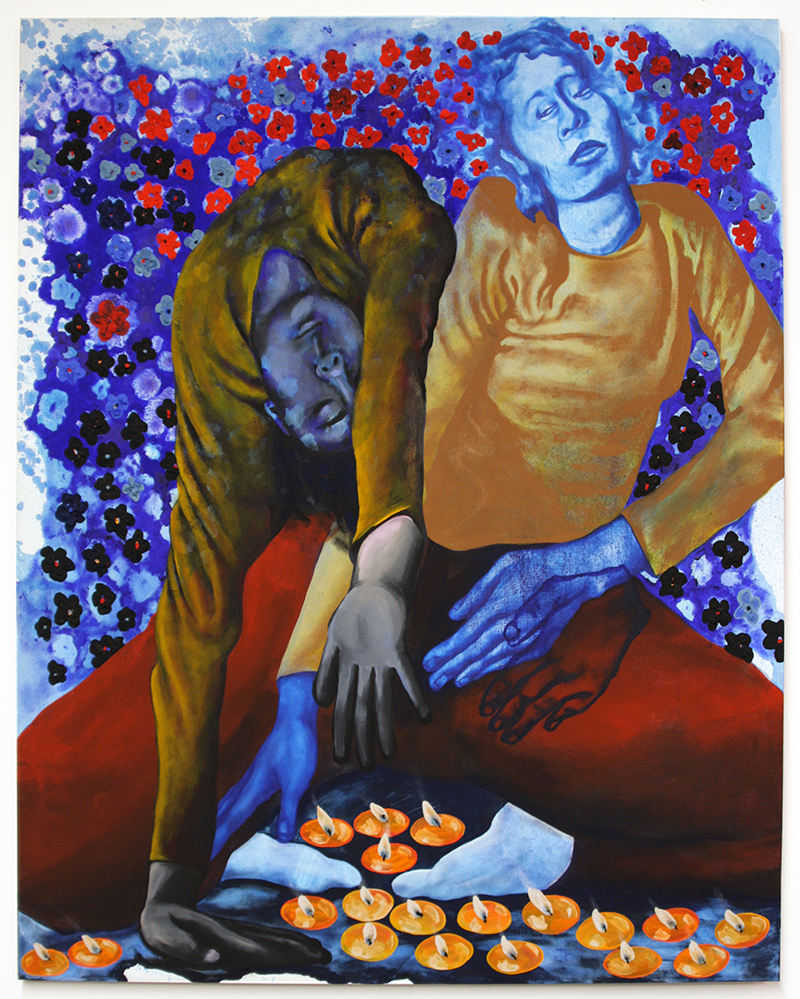
Contemporary artist Lynnea Holland-Weiss.
How do you deal with the conceptual difficulty and uncertainty of creating work?
The uncertainty is kind of what I love about making art. It’s always unknown and unpredictable. I like trusting it and riding the wave. Don’t get me wrong it is an emotional process of success and failure, ups and downs, fears and taking risks. And it’s that much more intense because making art is so personal. The difficulty and uncertainty of creating work is really a metaphor for life. Thus, sometimes I find painting is an even easier place to navigate the unknown, the hurdles, and take big risks. And then my painting practice ends up teaching me how to approach other avenues of my life in the same way.
How does your audience interact and react to the work you put out into the world?
My intention is that they relate to it and that they can find some aspects of themselves in each piece. I hope it reminds them of a familiar feeling, experience, relationship or desire. I want the viewers to have an emotional response to the work. One reaction that I love and happens often is when someone is talking about figures in my work they’ll often refer to them with a specific pronoun or sometimes see an identifying race or cultural identity in a figure, but then the next person’s interpretation or assumption of those same things are completely different. That happens so frequently and I love it!
I aim to make the people I paint ambiguous. I want the viewer to project themselves with their history of experiences into the figures. Therefore, when basic elements change from person to person, I feel success in my intentions to make work that is identifiable with any viewer.

Contemporary artist Lynnea Holland-Weiss.
What are you looking for when you look at other artists’ work? Which shows, performances and experiences have shaped your own creative process? Who are your maestros?
As an artist, when looking at other artists’ work I find it is truly successful when it immediately makes me want to go home and paint. I know when I have that reaction I’m really interested and impressed by the work. Naturally I’m drawn to figurative work and could stare into a painted face endlessly, but I respect and admire other mediums and approaches immensely as well. In general, I just want to be moved by a piece. I want to have an emotional response. I want to be stopped in my tracks and unable to look away.
Seeing Alice Neel’s portraits for the first time had such an enormous impact on me and definitely influenced me to pursue figurative painting. Her ability to capture the psychology of the people she painted blew me away. Some other artists I admire, my maestros if you will, are Francis Picabia, Henri Matisse, David Hockney, Nicole Eisenman, Kerry James Marshall, Joan Brown, Ferdinand Holder, R. B. Kitaj, Yayoi Kusama, Alison Schulnik, and Nick Cave to name a few.
Also some contemporaries whose work excites me currently and I feel connected to include Janiva Ellis, Haley Josephs, Naudline Pierre, Jordan Kasey, Maja Ruznic, Coady Brown and Anja Salonen. Also, I am incredibly inspired by dance performances. Some of my favorite companies and dancers are Batsheva, Pina Bauch, Okwui Okpokwasili, Sasha Waltz and bay area turf dancers. Okay wow, there’s a long list of artists and dancers that influence me, and I’m sure I’m leaving some out. Also, I am constantly inspired by music. Any work of art that moves me to tears is honestly what I am after!
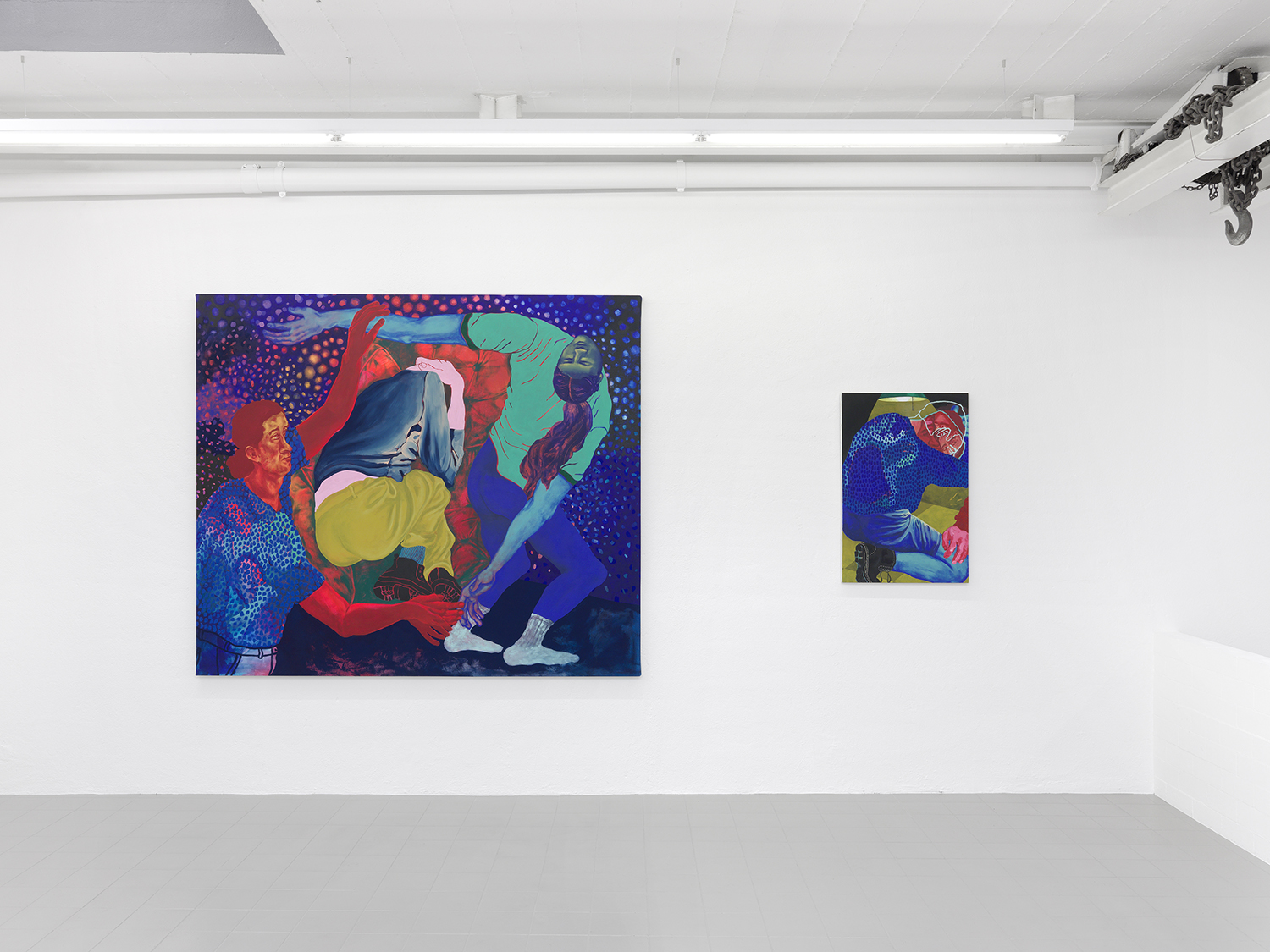
Contemporary artist Lynnea Holland-Weiss.
What have you observed in artists in flow?
I think one of the hardest paths you can pursue is a career as an artist. Therefore, from what I have observed and experience myself is that it just has to be something you have to do. The hunger and work ethic has to be there. It takes so much sacrifice and is a constant battle of overcoming doubt, rejection and resisting everything society tells you. When an artist is truly in flow, they are in it, completely captivated, and are listening to that inner voice with total decisive confidence. Those are special moments that come and go, so you fully savour them.
What is that one thing you wished people would ask you but never do?
Hmm, I don’t know. I usually just want to flip it around on people and ask them the questions. Like what does the painting making you think about, feel, remember or want? I like listening so much more then talking.
What is one imperative piece of advice you would give to someone who is just starting out?
Just keep making! Don’t try to put the cart before the horse. Your work will teach you more than you can imagine.
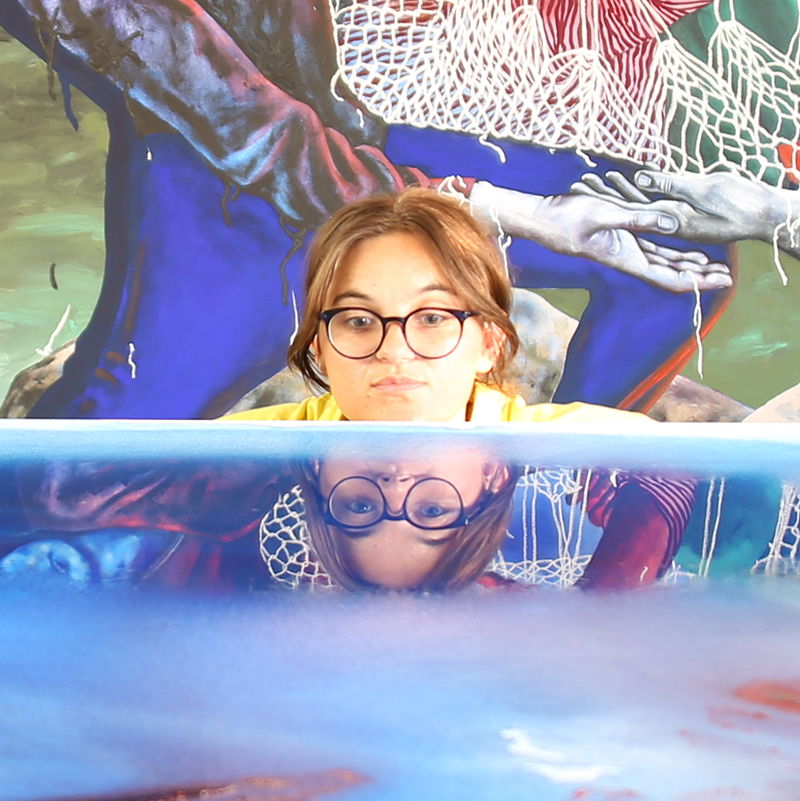
Contemporary artist Lynnea Holland-Weiss.
How does your interaction with a curator, gallery or client evolve?
I recently started a new relationship with a gallery, Galerie Sébastien Bertrand, in Geneva, Switzerland. They initially reached out to me and we set up a Facetime meeting. After more communication we decided to put a solo show together, which was in the fall of 2018. They are such a pleasure to work with, which can be pretty rare to find. It was a very organic process, and they now represent my work. I think both parties have to be equally excited and show their trust in one another for an initial interface to turn into an involved working relationship. As for commissions, I usually am not interested in pursuing them unless I am able to still have total creative control and freedom. My process is too responsive to not let it move away from the initial idea if that’s what the piece is calling for.
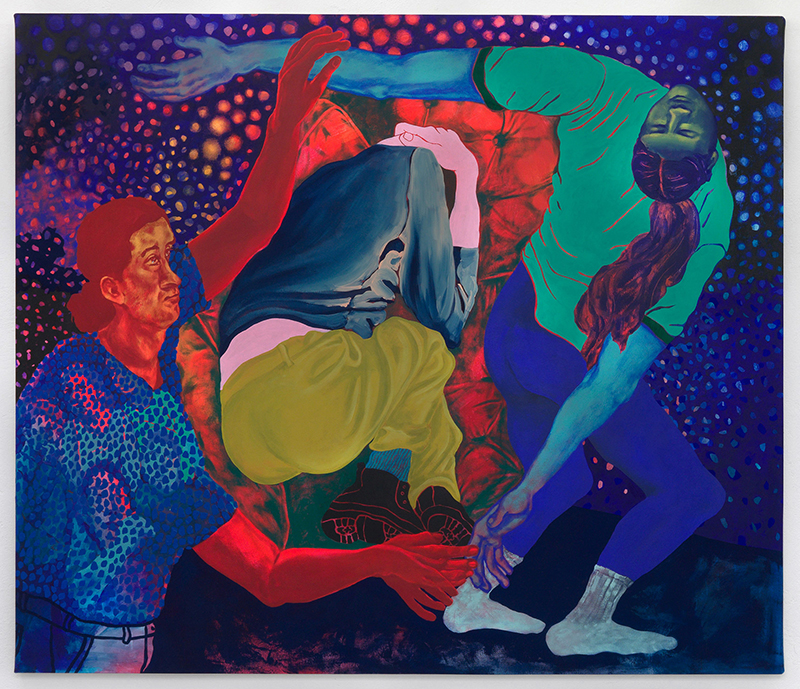
Contemporary artist Lynnea Holland-Weiss.
What are you working on now?
I currently am working on a large painting that depicts people lifting and carrying one another surrounded by clouds, and I want to make a series of these images all entitled Support Eachother. I’m interested in how it makes us feel to see a body hold the weight of another body. This relates to a previous series that I plan to continue as well of people hugging, which investigates a full physical embrace of two people. I’ve always been drawn to make images of bodies holding other bodies, emphasising the emotional exchange of physical touch and weight.
I have also recently been delving into ways to show the intangible in relation to the corporeal experience and how this relates to the visualisation of time. I’ve been doing this through layers and transparency. Painting has the ability to highlight, extend and maintain the viewer’s engagement with a specific gesture. But even with this focus on a single moment, it has a miraculous way of holding a deep saturation of time as well. Through painted layers the past, present and future can exist together.
Before you go – you might like to browse our Artist Interviews. Interviews of artists and outliers on how to be an artist. Contemporary artists on the source of their creative inspiration.











Add Comment